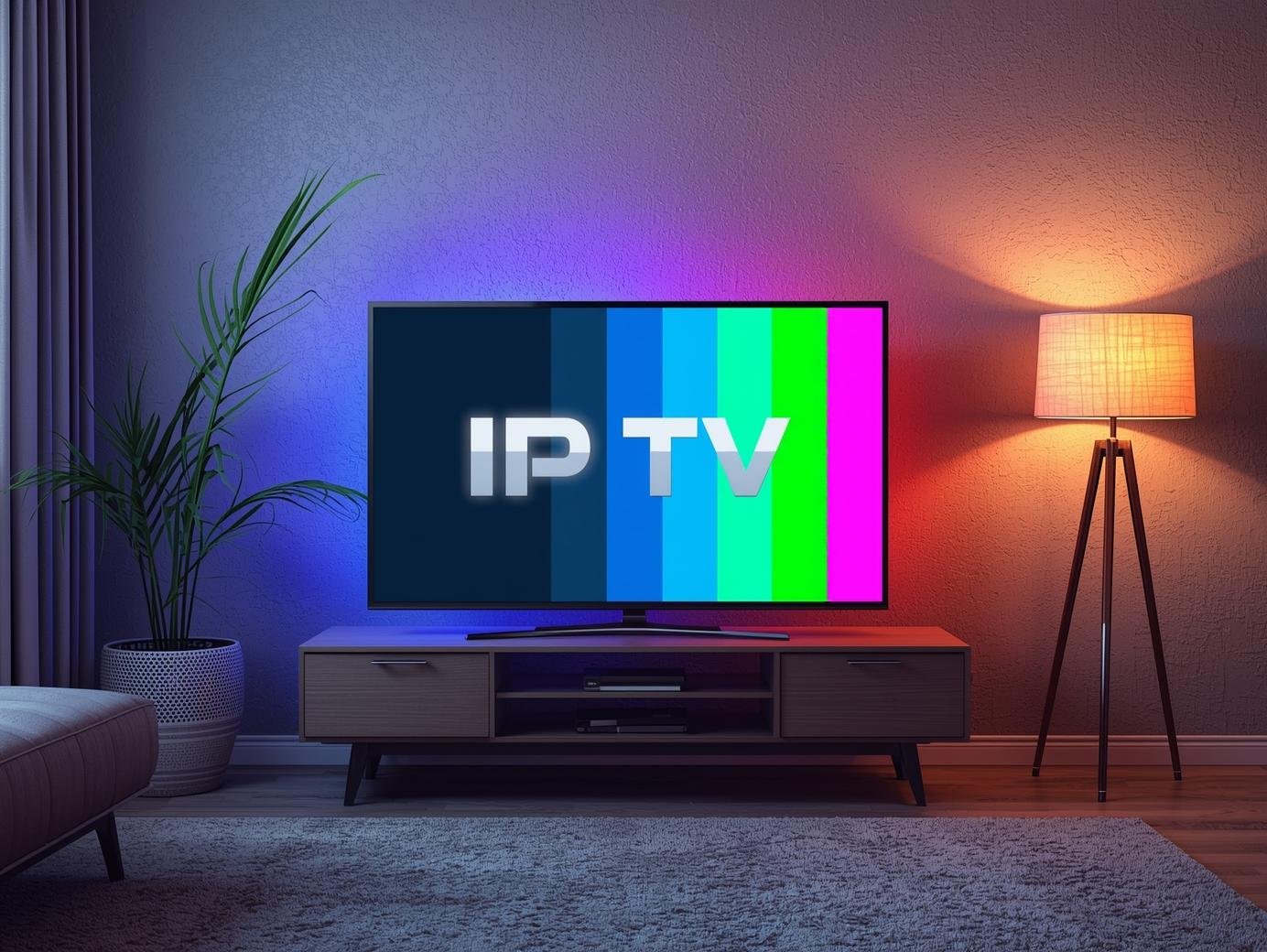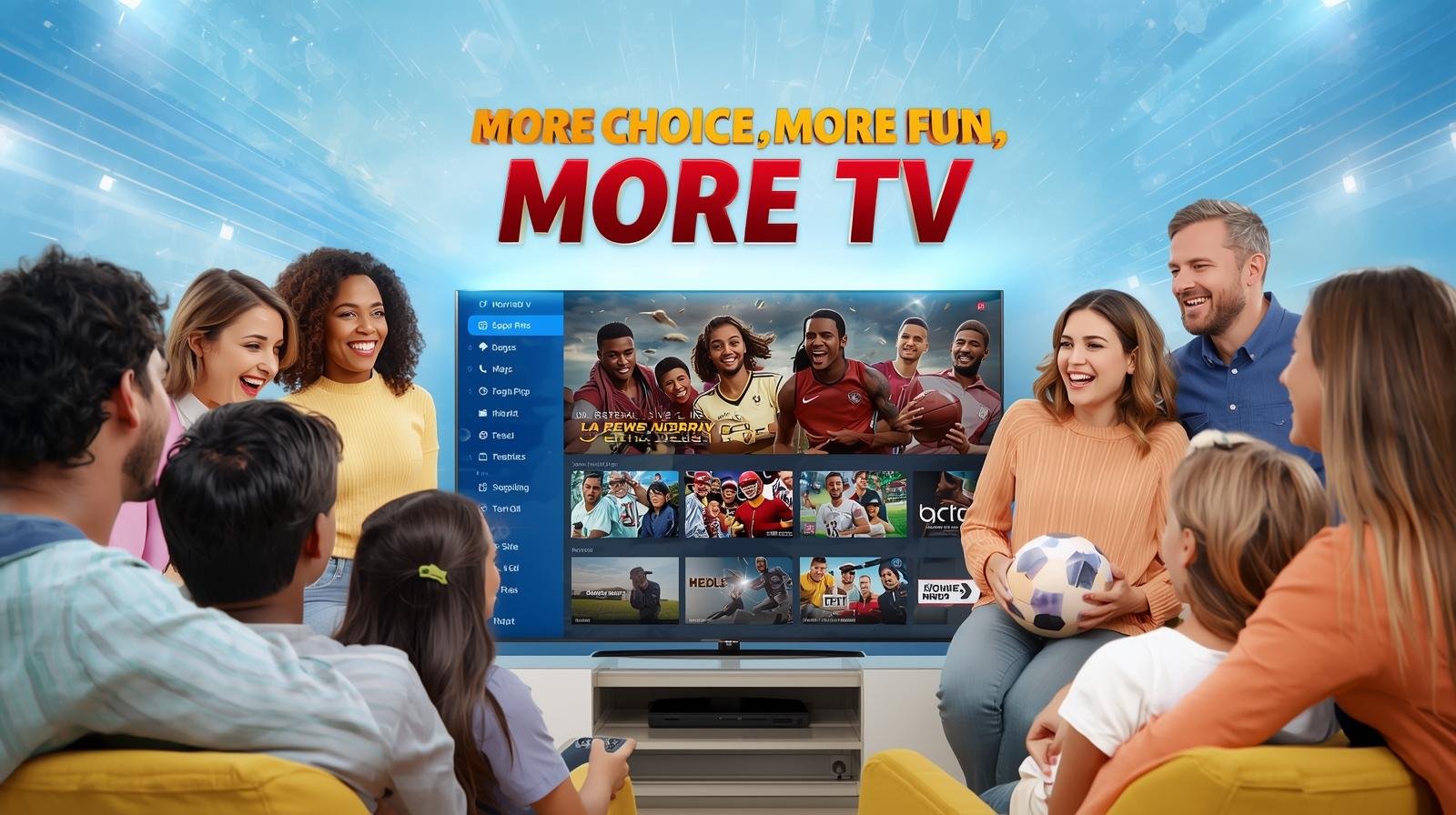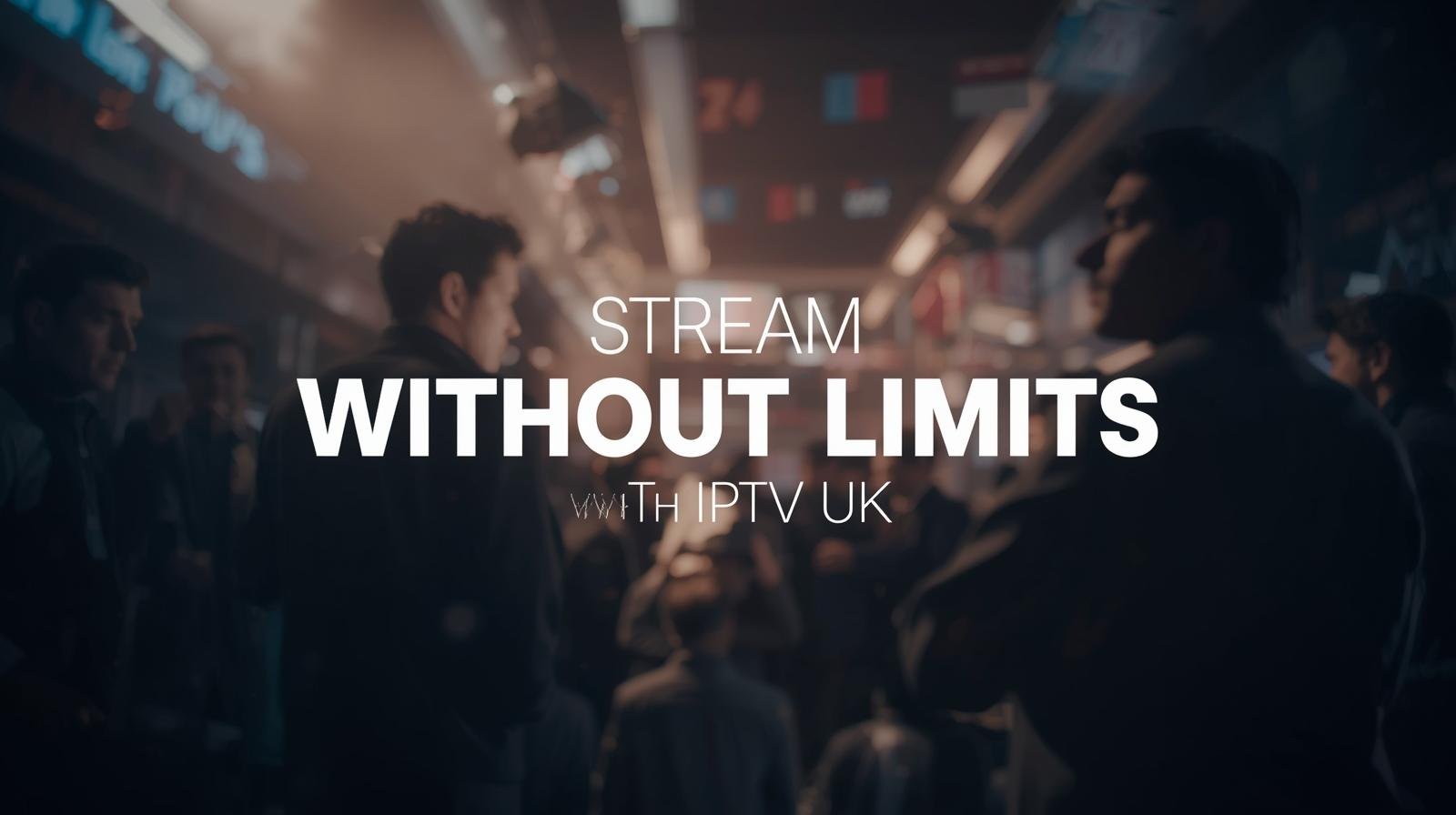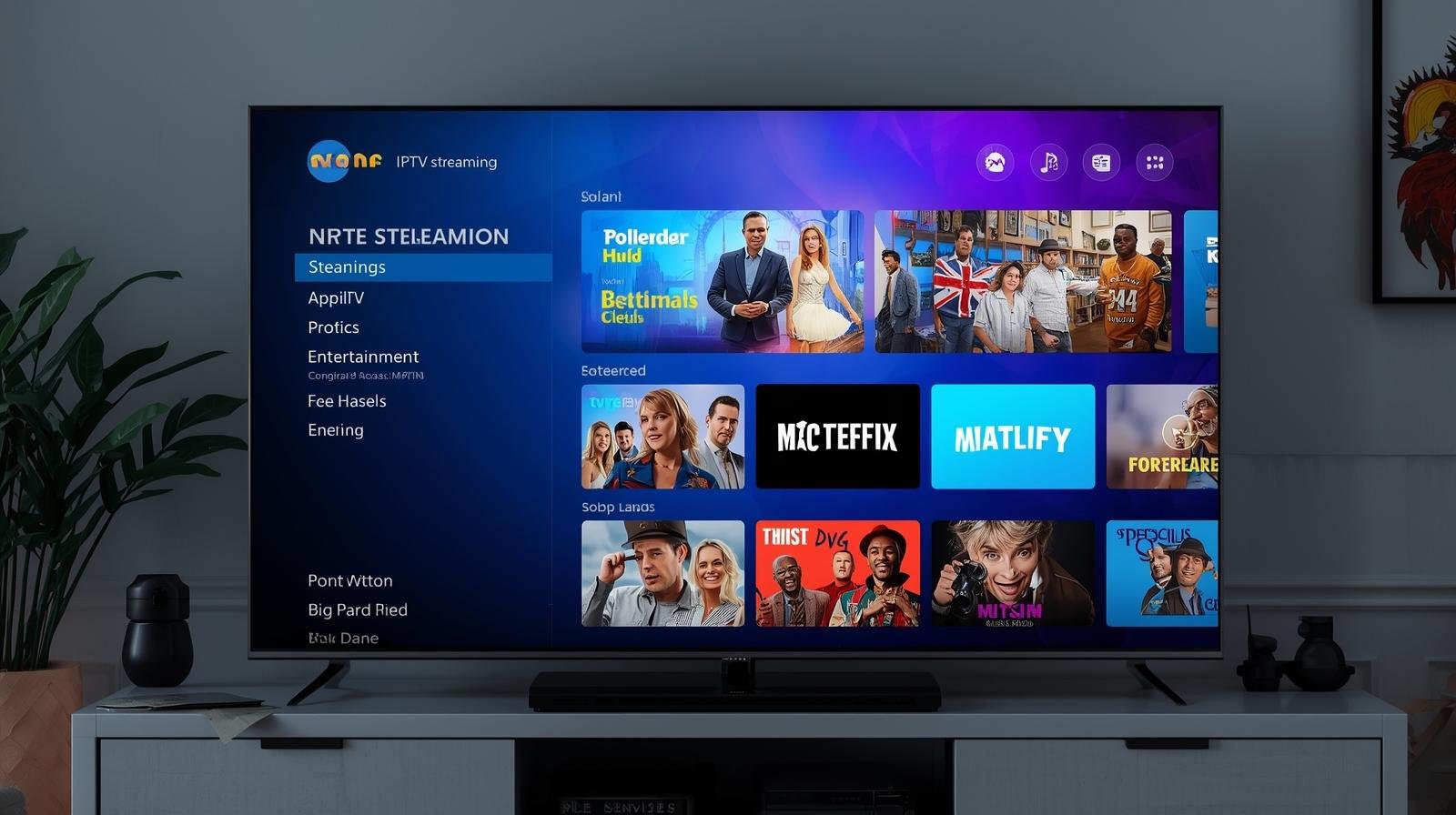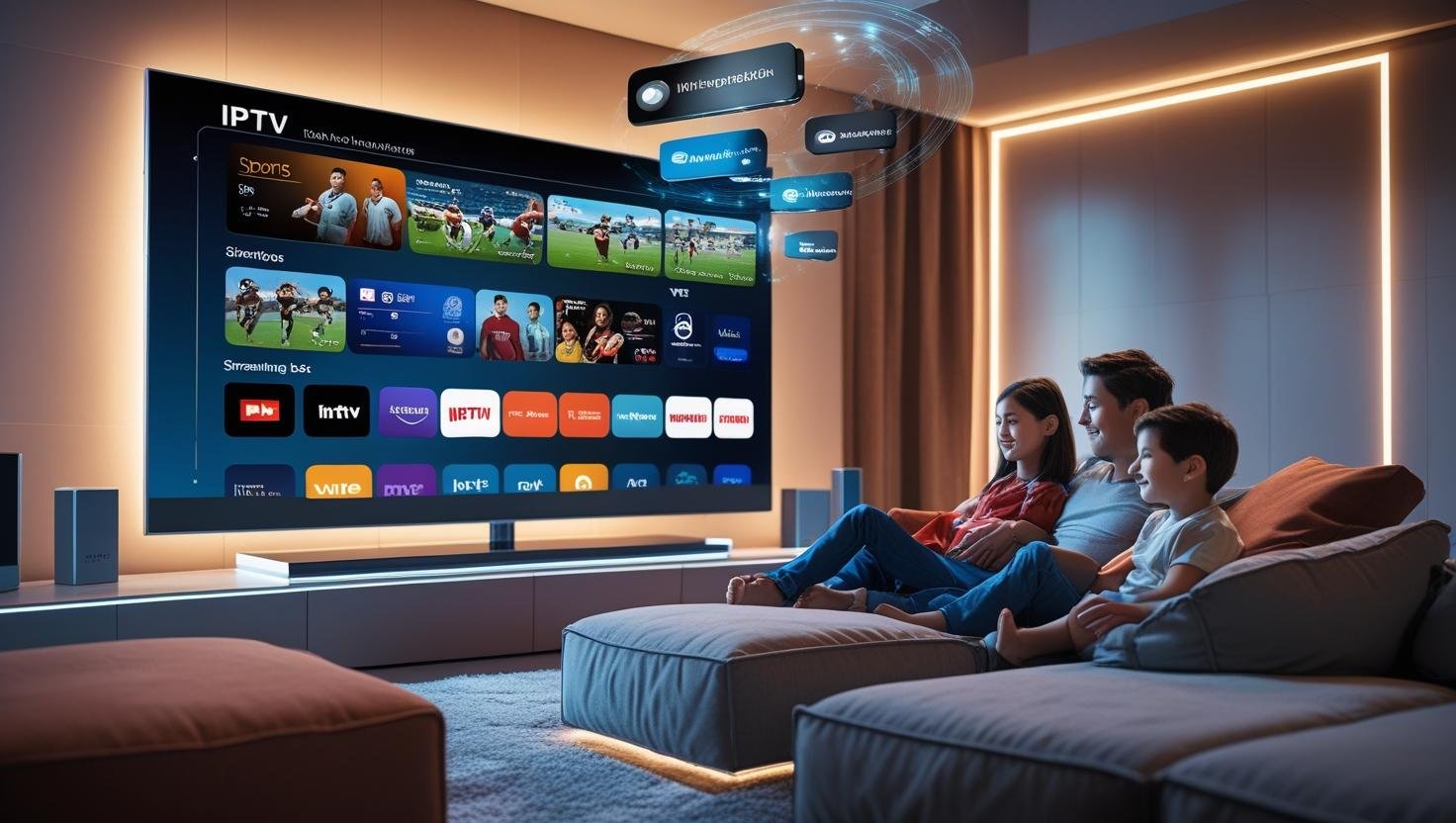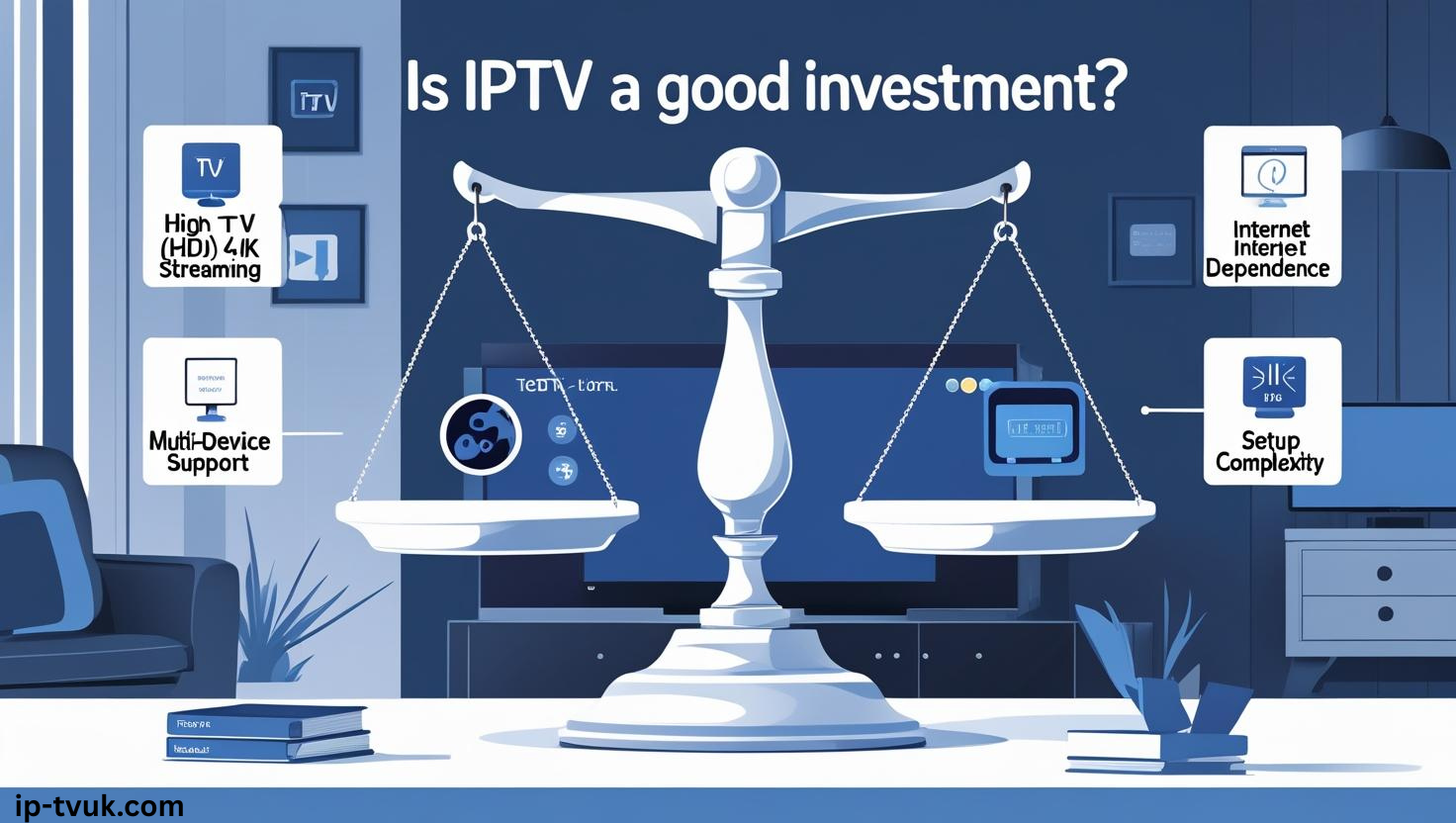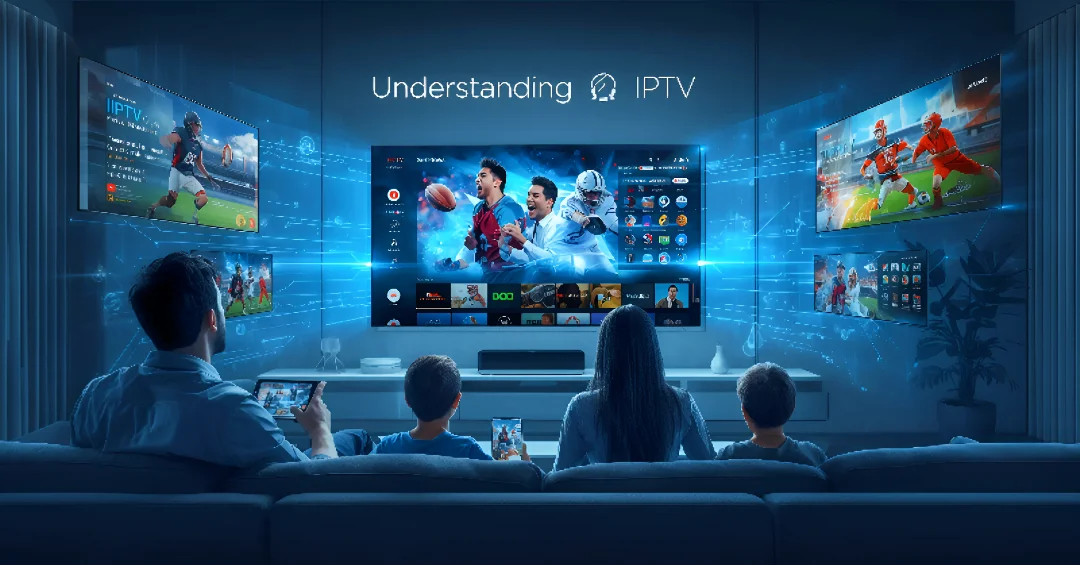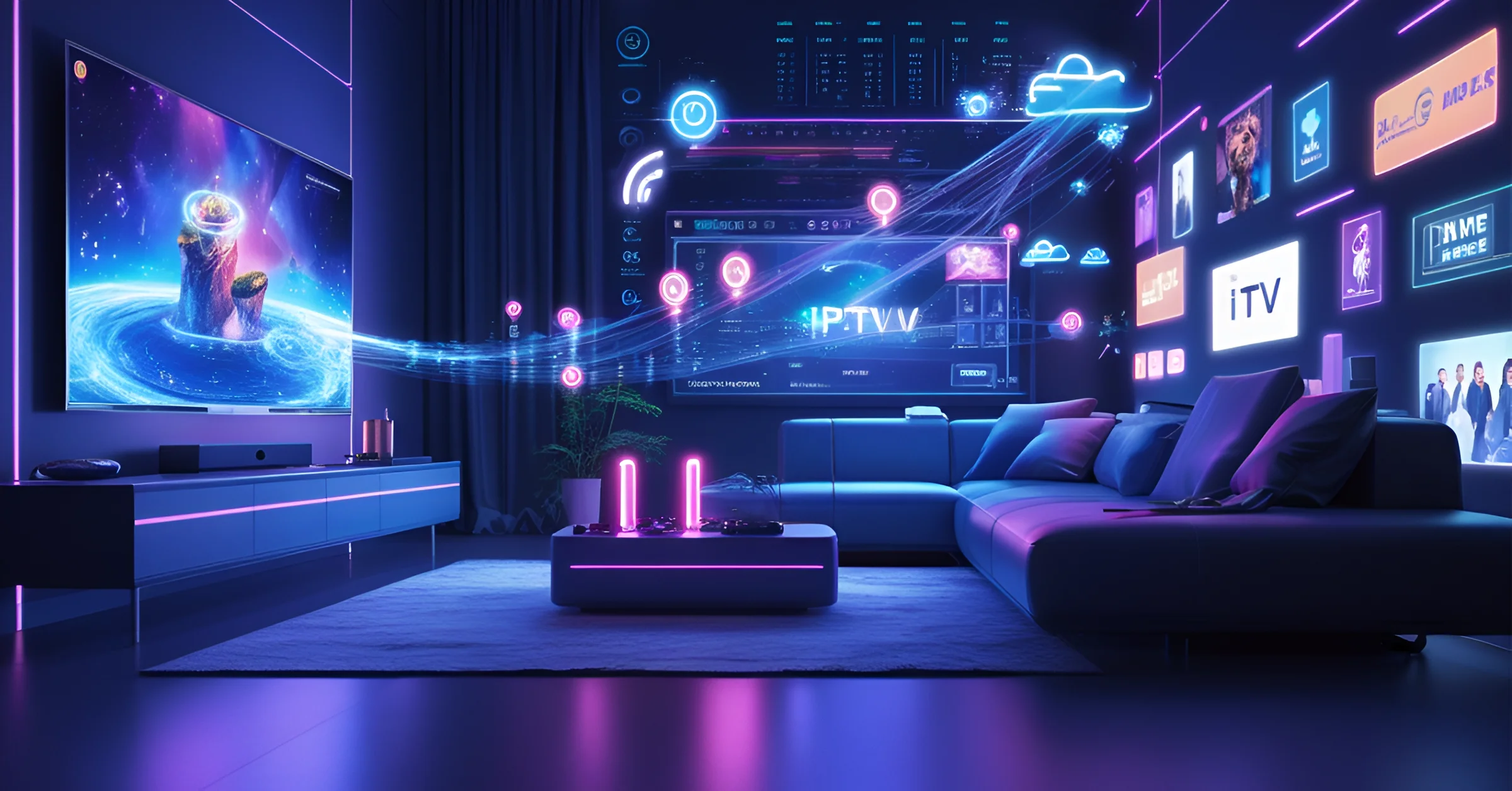Introduction
The way we watch television has changed dramatically over the past decade. Where a living room used to have a single box (or dish) and a handful of channels, viewers now choose between a range of delivery methods, devices, and experiences. Two big contenders sit at the center of that choice: IPTV (Internet Protocol Television) and Traditional TV (cable, satellite, and terrestrial/free-to-air broadcast). Both deliver moving pictures and sound, but they do so in very different ways — and those differences matter depending on what you value: cost, channel selection, reliability, flexibility, or legal peace of mind.
Quick definitions (so we’re on the same page)
IPTV
IPTV delivers TV content over an internet protocol network — that is, via the internet (or a controlled IP network). It can include live TV channels, time-shifted streams (start-over), and video-on-demand (VOD). IPTV services are accessed through smart TVs, streaming sticks, set-top boxes, mobile apps, or computers.
Traditional TV
This umbrella term covers:
-
Terrestrial (Free-to-air) — broadcasts received with an antenna (e.g., Freeview in the UK).
-
Cable — channels delivered over a managed coaxial or fiber network by a cable provider.
-
Satellite — signals beamed from satellites to a dish on your roof (e.g., Sky, DirecTV).
These are generally delivered over dedicated broadcast infrastructure rather than the public internet.
Core technical difference
-
Delivery method: IPTV = packets over IP networks; Traditional TV = broadcast or dedicated network streams.
-
Control: IPTV often uses two-way communication (requesting VOD, interactive menus). Traditional TV is largely one-way (broadcaster → viewer).
-
Latency & buffering: IPTV depends on your internet bandwidth and network conditions; traditional broadcast is designed to be low-latency and consistent because it’s not competing with general internet traffic.
Pros and cons — IPTV
Pros
-
Flexibility & device freedom
Watch on phones, tablets, computers, smart TVs, streaming boxes. Move from room to room easily. -
On-demand and interactivity
Many IPTV providers include large VOD libraries, catch-up, start-over, and interactive features like channel guides and recommendations. -
Personalization
User profiles, watchlists, adaptive recommendations, and targeted content are common. -
Often cheaper (potentially)
Internet-only packages or app-based services can undercut legacy cable bundles — especially if you only want a handful of channels. -
Scalability
Easy to add new channels, add-ons, and features remotely — no technician required for most upgrades.
Cons
-
Quality depends on internet
Poor bandwidth or network congestion causes buffering, pixelation, or dropped streams. -
Fragmentation
Content can be scattered across many apps/services; you might need multiple subscriptions to get everything you want. -
Potential legality issues
Not all IPTV providers operate under proper licensing. Unauthorized/grey-market IPTV services exist; accessing them can carry legal and security risks. -
Complex setup for some users
Configuring third-party apps or smart DNS/VPNs can be a hurdle for non-technical users.
Pros and cons — Traditional TV (cable/satellite/terrestrial)
Pros
-
Reliability & consistent quality
Broadcast and managed networks deliver stable picture and audio with less reliance on fluctuating internet conditions. -
Live events & sports
Broadcasters and sports rights-holders have traditionally prioritized cable/satellite for marquee live events; many live streams still have lower latency on traditional systems. -
Bundled simplicity
Single provider for TV, internet, and sometimes phone — with consolidated billing and customer support. -
Familiar user experience
Traditional channel surf and DVR setups are well-understood by many households. -
Regulatory clarity
Licensed broadcasters operate within clear legal frameworks, so there’s less risk of inadvertently watching unlicensed content.
Cons
-
Cost
Legacy bundles can be pricey, and channel lineups often include many channels you never watch. -
Less portability
Typically tied to a physical set-top box or a location (unless provider offers streaming apps). -
Slower innovation
Rolling out new features or flexible pricing models can be slower than nimble internet-native services. -
Limited choice for on-demand in cheaper tiers
VOD and integrated streaming features might be limited unless you pay extra.
Cost comparison (general guidance)
Costs vary by country and provider, but here’s how to think about it:
-
IPTV/App-based: Often lower entry cost. You can subscribe month-to-month. No installation fee if you use devices you already own.
-
Traditional: Higher monthly packages, often with an installation fee and contract terms. Promotions can lower the price initially, but long-term costs may be higher.
If you already have high-speed internet and want à la carte content (streaming apps), IPTV-centric setups usually offer better value. If you need a dependable TV lineup and prefer an all-in-one solution with local support, traditional TV may make more financial sense — especially where bundle discounts are good.
Content & channel availability
-
Major networks and sports: Big broadcasters often license content to multiple platforms. However, exclusive rights (e.g., certain sports leagues) can still be tied to cable/satellite or specific streaming deals.
-
Local channels: Free-to-air broadcasts are the surest way to get local, IPTV vs Traditional TV regional, and public-service channels without subscription.
-
Niche content: IPTV and streaming platforms often excel at niche or international content. If you want channels from other countries, IPTV or dedicated streaming services generally offer more choice.
Bottom line: check where your must-have channels live before picking.
Picture quality & reliability
-
Traditional TV generally offers consistent HD and (where supported) 4K over managed networks. Satellite can be excellent for HD but can suffer with weather interference.
-
IPTV can match or exceed broadcast quality if you have sufficient bandwidth and a stable connection. Many services now provide 4K streams and adaptive bitrates that maintain watchability under poorer conditions, but maximum quality requires good internet.
If you’re someone who demands perfect, flicker-free 4K for every live sports match, the conservative pick is a high-quality traditional provider or a premium IPTV service plus a strong internet plan.
Latency & live events
IPTV can introduce extra latency (delay) due to buffering and streaming protocols. For casual TV watching this is irrelevant, but for live interactive events (e.g., live auctions, betting, or synchronized viewing with friends) latency matters. Traditional broadcast systems usually have lower latency for live content.
User experience & interface
-
IPTV: Modern, app-driven interfaces, multi-device sync, voice search, personalized profiles, and aggressive recommendation engines. Great for users who enjoy exploring content and fine-tuning their experience.
-
Traditional: Familiar electronic program guides (EPGs), IPTV vs Traditional TV reliable DVRs, and channel surfing. For households that like simplicity and predictability, traditional interfaces still win.
Device compatibility & portability
If you travel, commute, or simply want to watch outside the living room, IPTV and streaming apps are far more portable. Traditional TV is mostly home-bound unless the provider offers mobile apps with credentials.
Setup and hardware
IPTV setup: Often as simple as installing an app or plugging in a streaming stick. Some IPTV services offer set-top boxes, IPTV apps for smart TVs, or web portals.
Traditional setup: Requires a cable subscription and set-top box installation or a satellite dish and receiver — IPTV vs Traditional TV sometimes an engineer visit is necessary.
Consider your tolerance for DIY: IPTV tends to be easier for tech-savvy users; traditional TV may feel more “done for you”.
Parental controls and accessibility
Both IPTV and traditional providers offer parental controls and accessibility options (subtitles, audio description). IPTV platforms sometimes offer more granular controls tied to user profiles.
Legality, security and privacy
This is a big one:
-
Legitimacy: Licensed IPTV services operate legally and carry rights to the content they stream. Pirated or “grey-market” IPTV services stream copyrighted content without permission — using them risks legal consequences, malware, and poor support.
-
Privacy: IPTV platforms collect viewing data and may use it for recommendations or advertising. Traditional providers also collect data but often under different regulatory regimes.
-
Security: Download apps only from official app stores and use secure passwords. Unscrupulous IPTV apps may contain malware or spyware.
Always verify that an IPTV service is licensed and reputable. If security and legal compliance are important to you, prefer mainstream providers or well-reviewed alternatives.
DVR, catch-up, and recording
Both ecosystems offer recording and catch-up features:
-
Traditional providers have hardware DVRs or cloud DVR add-ons — convenient and integrated.
-
IPTV offers cloud DVR, on-device recording, and catch-up windows, often with more flexibility and longer storage options depending on the provider.
If you rely heavily on recording and long-term storage of shows, IPTV vs Traditional TV check the DVR terms and storage limits before choosing.
Bandwidth requirements (practical)
A few general rules:
-
SD (standard definition): low bandwidth (e.g., 1–3 Mbps)
-
HD (720p/1080p): mid-range (e.g., 5–10 Mbps)
-
4K/UHD: high (e.g., 15–25+ Mbps)
If multiple devices stream simultaneously, add up the required bandwidth. A household with 4K streaming, gaming, and video calls will need a much faster internet plan than a single-TV home.
When IPTV is the better choice
Choose IPTV if you:
-
Already have reliable high-speed internet.
-
Want portability — watch anywhere, IPTV vs Traditional TV on any device.
-
Prefer on-demand libraries, smart recommendations, and personalization.
-
Want to avoid long contracts and large bundle fees.
-
Like experimenting with apps and new services.
IPTV is especially attractive to cord-cutters, multi-device households, and people who value flexibility.
When Traditional TV is the better choice
Choose Traditional TV if you:
-
Need maximum reliability and consistent picture quality for live sports and events.
-
Prefer an all-in-one service with unified billing and in-person support.
-
Live in an area with poor or expensive internet.
-
Want guaranteed access to local terrestrial channels without extra equipment.
-
Are uncomfortable with tech setup and simply want turn-on-and-watch simplicity.
Traditional TV remains the default for households that prioritize stability and are content with channel lineups curated by a single provider.
Hybrid approach — mix and match
You don’t always have to pick one. Many households use a hybrid approach:
-
Keep a simple terrestrial tuner or basic cable for local channels and news.
-
Use IPTV/streaming apps (Netflix, Amazon Prime, Disney+, sport-specific apps) for on-demand and niche content.
-
Add a cloud DVR or streaming box to centralize content where possible.
Hybrid setups give resilience (if your internet drops, you still get local broadcasts) and flexibility without fully abandoning either model.
Future trends to watch (brief)
-
Convergence: Traditional providers increasingly offer IP-delivered apps and on-demand catalogs; IPTV services are adding linear channel packs.
-
Cloud DVR and edge caching: Faster access and lower latency for streamed live events.
-
Rights fragmentation: More niche exclusives mean viewers may need multiple subscriptions unless bundles become smarter.
-
Improved broadband: As fiber and 5G roll out, IPTV performance and reliability will continue to improve.
How to make the decision — a quick checklist
-
What are your must-have channels or apps? If they’re on one platform, that’s a strong signal.
-
How reliable is your home internet? Run a speed test and check peak-time performance.
-
How many people/devices stream at once? Add up bandwidth needs.
-
Do you need portability? If yes, lean IPTV.
-
Is legal content and support important? If yes, favor licensed providers — whether IPTV vs Traditional TV.
-
What’s your budget? Compare total monthly cost, installation fees, and any device purchases.
-
How tech-comfortable are you? If not at all, a traditional provider with in-home setup may be appealing.
Final verdict — which should you pick?
There’s no single universal winner. If forced to generalize:
-
Pick IPTV (or streaming-first) if you value flexibility, device portability, on-demand content, and potentially lower costs — and you have reliable high-speed internet.
-
Pick Traditional TV (cable/satellite/terrestrial) if you prioritize consistent reliability for live events, want a simple all-in-one solution, or live where internet is unreliable or capped.
If you’re uncertain, start with a hybrid model: keep basic terrestrial or a minimal cable package for news and live events, and lean on IPTV/streaming services for the rest. That gives you the best of both worlds while minimizing risk.
Quick FAQ
Q: Is IPTV illegal?
A: IPTV itself is a technology and is legal. The legality depends on whether the content is licensed. Use reputable, licensed services to stay on the right side of the law.
Q: Will IPTV work with my smart TV?
A: Most modern smart TVs support popular IPTV apps or allow you to install streaming apps. Alternatively, inexpensive streaming sticks or set-top boxes work well.
Q: Do I need a fast internet plan for IPTV?
A: For HD, yes — aim for at least 10–20 Mbps for single-HD/4K streams. If multiple devices stream simultaneously, increase your plan accordingly.
Q: Can I record IPTV shows?
A: Many IPTV services offer cloud DVR or local recording options, though limits and costs vary.
Q: Which is better for sports?
A: If latency, guaranteed access, and picture stability are critical, traditional providers (or premium licensed IPTV services) are safer. For convenience and multi-device viewing, IPTV vs Traditional TV is strong — but verify that the provider has the rights to the sports you watch.
Parting thought
The decision between IPTV and Traditional TV is less about “which is objectively better” and more about “which fits your lifestyle, budget, and tech environment.” If you love choice, mobility, and on-demand libraries — and your internet is up to the task — IPTV will likely serve you best. If you want reliability, simplicity, and a predictable experience for live TV, traditional TV still holds strong.
